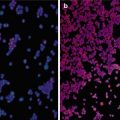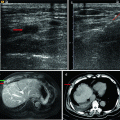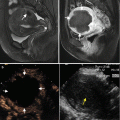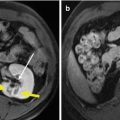Parameter
Non-exposure
Low exposure
High exposure
p
(n = 107)
(n = 93)
(n = 105)
Gender
Male
90
78
85
0.797
Female
17
15
20
Age (year)
57.1 ± 12.0
56.7 ± 10.8
56.4 ± 11.3
0.996
Number of lesions
1
89
72
84
0.546
2
15
19
16
3
3
2
5
Maximum diameter (cm)
2.6 ± 1.1
2.7 ± 1.3
2.8 ± 1.3
0.802
Liver diseases
HBV
90
83
88
0.052
HCV
13
8
12
Other
4
2
5
Child–Pugh classification
A
97
83
93
0.485
B
10
10
12
).
15.3.1 Recurrence and Metastasis
The recurrence and metastasis rate in the high, low and non-exposure groups were 61.9 % (65/105), 50.5 % (47/93), and 69.2 % (74/107) respectively. The 1- and 2-year recurrence and metastasis rates are shown in Table 15.2. In the low-exposure group, the rates were significantly lower than in the non-exposure group (p = 0.014 and 0.009). In the high-exposure group, the 1-year recurrence and metastasis rates were significantly lower than in the non-exposure group (p = 0.025), while there was no significant difference in the 2-year recurrence and metastasis rates, though a decrease trend was detected (p = 0.131). There was no significant difference between the high- and low-exposure groups in 1- and 2-year recurrence and metastasis rates (p = 0.880 and 0.306).
Table 15.2
The 1-, 2-year recurrence and metastasis rate of different cohort
Cohort | 1-year | 2-year |
|---|---|---|
Non-exposure | 50.5 % (54/107) | 63.6 % (68/107) |
Low-exposure | 32.3 % (30/93)a | 44.1 % (41/93)c |
High-exposure | 34.3 % (36/105)b | 52.4 % (55/105) |
15.3.2 Survival
The 1-, 2- and 3-year cumulative survival rates of each group are shown in Table 15.3. There was no significant difference in the 1-year OS rate among the three groups (all OS > 90 %, p > 0.05). It was detected that the 2- and 3-year OS rates of the high-exposure group were significant higher than in the non-exposure group (p = 0.000, p = 0.043). Different survival curves of exposure factors are shown in Fig. 15.1.

Table 15.3
The 1-, 2- and 3-year cumulative survival rate of different cohort
Cohort | 1-year | 2-year | 3-year |
|---|---|---|---|
Non-exposure (%) | 90.7 | 70.1 | 64.4 |
Low-exposure (%) | 90.5 | 81.7 | 72.0 |
High-exposure (%) | 93.3 | 84.8a | 77.1b |

Fig. 15.1
The OS rate of the high exposure group was significant higher than the non-exposure group (p = 0.002). There was no significant difference between the high- and low-exposure groups (p = 0.080), and there was also no significant difference between the low- and non-exposure groups (p = 0.208)
15.3.3 Cox Multivariate Regression Analysis of Disease-Free Survival
The data of gender, age, number of lesions, lesion size, the maximum diameter, the type of liver disease, Child–Pugh classification, exposure factors, and disease-free survival time were analyzed by Cox multivariate regression analysis, and are listed in Table 15.4.
Table 15.4
Multi-factor Cox multivariate regression analysis with disease-free survival time
Factor | B | SE | Wald | Sig. | Exp(B) | 95.0 % CI for Exp(B) | |
|---|---|---|---|---|---|---|---|
Lower | Upper | ||||||
Exposure factor | −0.434 | 0.193 | 5.076 | 0.024 | 0.648 | 0.444 | 0.945 |
Age | 0.007 | 0.007 | 1.033 | 0.309 | 1.007 | 0.994 | 1.020 |
Gender | 0.070 | 0.205 | 0.115 | 0.734 | 1.072 | 0.717 | 1.603 |
Liver diseases | 0.383 | 0.277 | 1.910 | 0.167 | 1.467 | 0.852 | 2.524 |
Number of lesions | 0.139
Stay updated, free articles. Join our Telegram channel
Full access? Get Clinical Tree
 Get Clinical Tree app for offline access
Get Clinical Tree app for offline access

| ||||||





